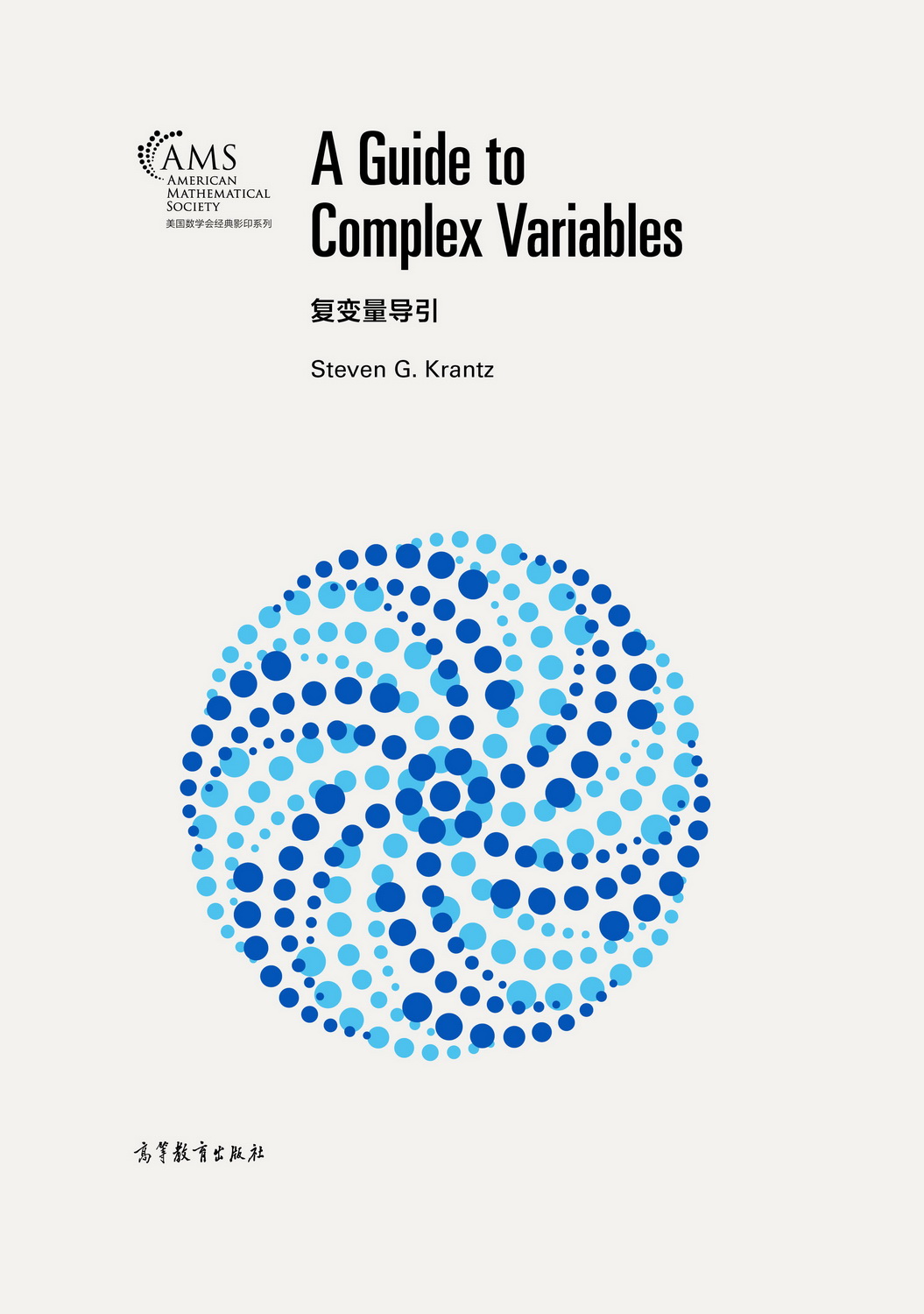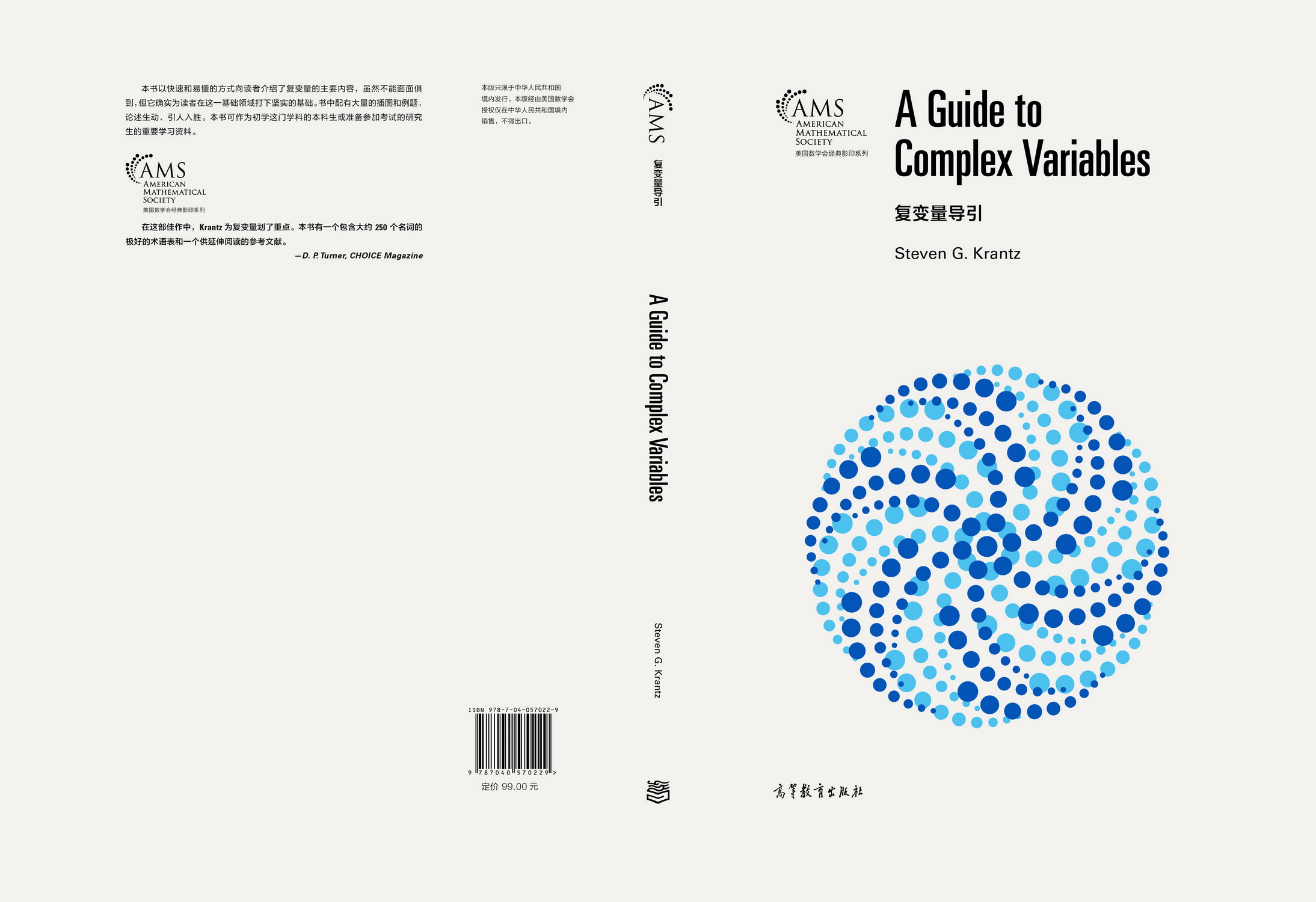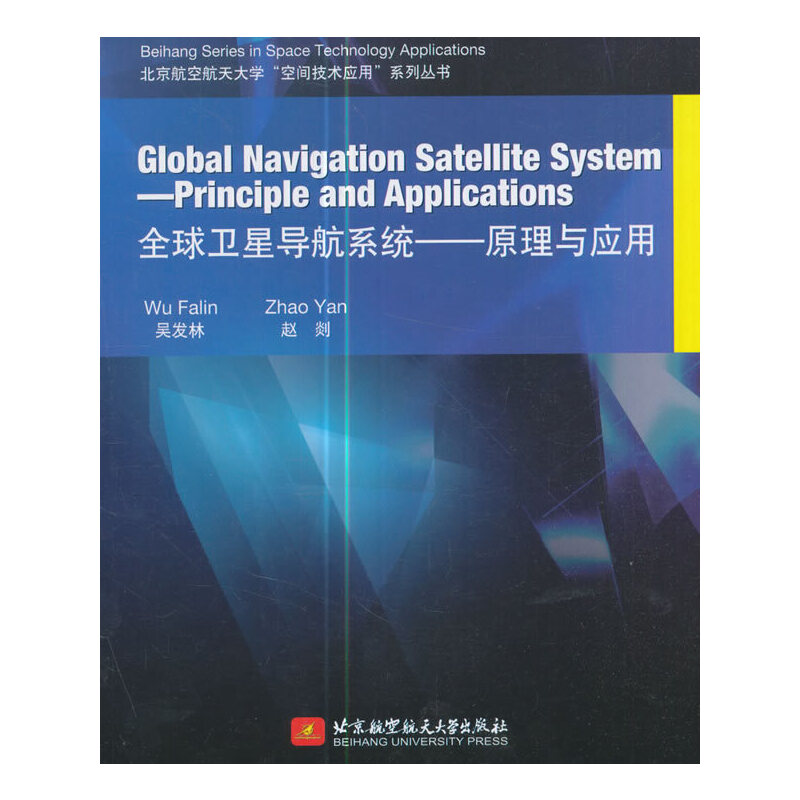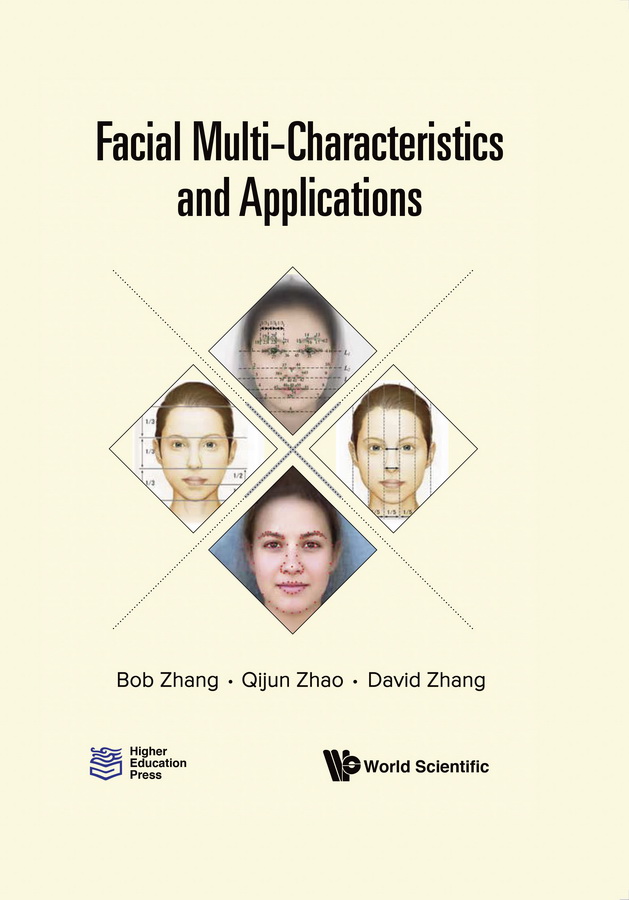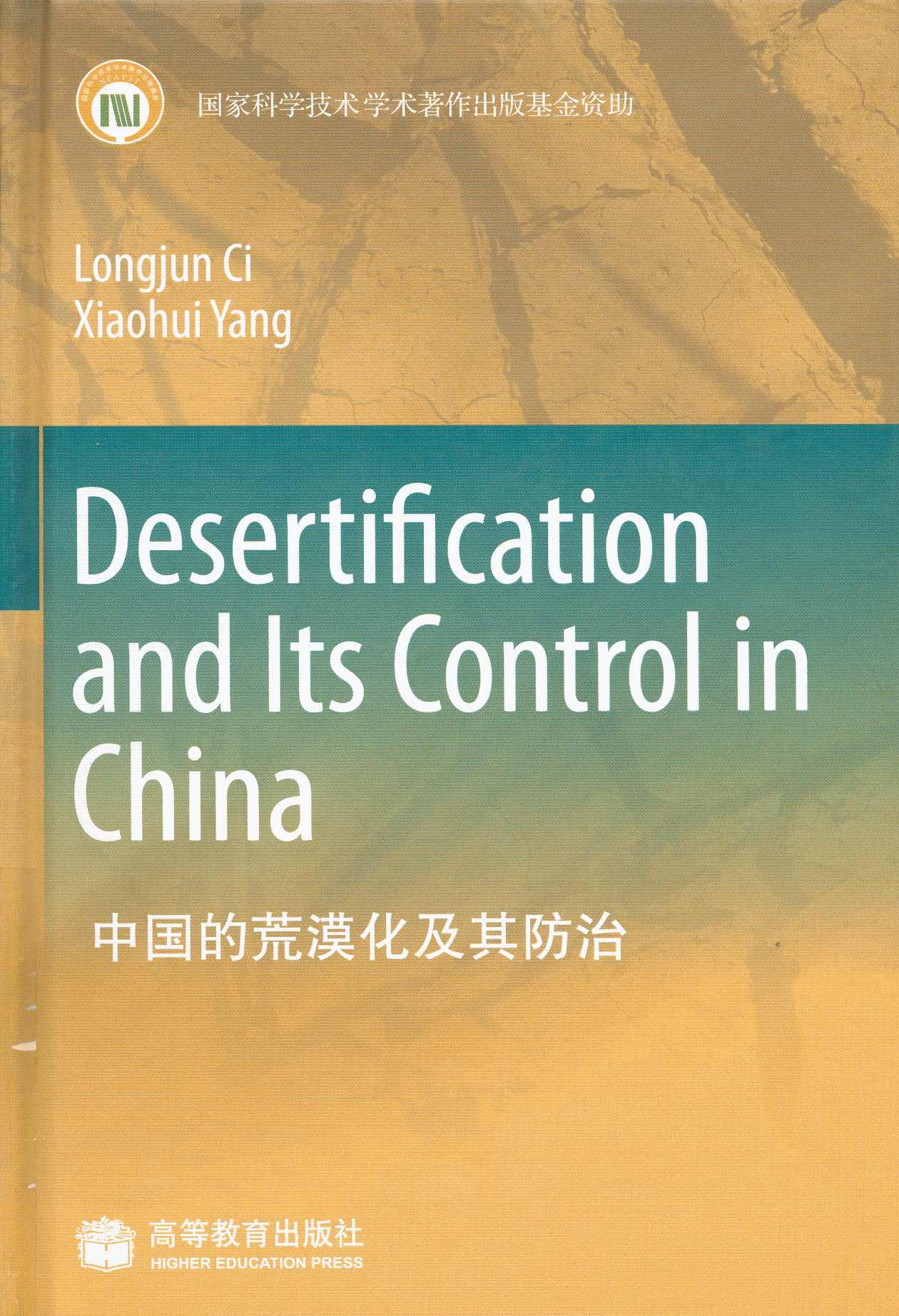复变量导引(影印版)
作者: Steven G.Krantz
出版时间:2022-02
出版社:高等教育出版社
- 高等教育出版社
- 9787040570229
- 1版
- 412712
- 48266230-1
- 精装
- 16开
- 2022-02
- 350
- 212
- 理学
- 数学类
- 数学类
- 研究生及以上
前辅文
1 The Complex Plane
1.1 Complex Arithmetic
1.1.1 The Real Numbers
1.1.2 The Complex Numbers
1.1.3 Complex Conjugate
1.1.4 Modulus of a Complex Number
1.1.5 The Topology of the Complex Plane
1.1.6 The Complex Numbers as a Field
1.1.7 The Fundamental Theorem of Algebra
1.2 The Exponential and Applications
1.2.1 The Exponential Function
1.2.2 The Exponential Using Power Series
1.2.3 Laws of Exponentiation
1.2.4 Polar Form of a Complex Number
1.2.5 Roots of Complex Numbers
1.2.6 The Argument of a Complex Number
1.2.7 Fundamental Inequalities
1.3 Holomorphic Functions
1.3.1 ContinuouslyDifferentiable and Ck Functions
1.3.2 The Cauchy-Riemann Equations
1.3.3 Derivatives
1.3.4 Definition of Holomorphic Function
1.3.5 The Complex Derivative
1.3.6 Alternative Terminology for Holomorphic Functions
1.4 Holomorphic and Harmonic Functions
1.4.1 Harmonic Functions
1.4.2 How They are Related
2 Complex Line Integrals
2.1 Real and Complex Line Integrals
2.1.1 Curves
2.1.2 Closed Curves
2.1.3 Differentiable and Ck Curves
2.1.4 Integrals on Curves
2.1.5 The Fundamental Theorem of Calculus along Curves
2.1.6 The Complex Line Integral
2.1.7 Properties of Integrals
2.2 Complex Differentiability and Conformality
2.2.1 Limits
2.2.2 Holomorphicity and the Complex Derivative
2.2.3 Conformality
2.3 The Cauchy Integral Formula and Theorem
2.3.1 The Cauchy Integral Theorem, Basic Form
2.3.2 The Cauchy Integral Formula
2.3.3 More General Forms of the Cauchy Theorems
2.3.4 Deformability of Curves
2.4 The Limitations of the Cauchy Formula
3 Applications of the Cauchy Theory
3.1 The Derivatives of a Holomorphic Function
3.1.1 A Formula for the Derivative
3.1.2 The Cauchy Estimates
3.1.3 Entire Functions and Liouville’s Theorem
3.1.4 The Fundamental Theorem of Algebra
3.1.5 Sequences of Holomorphic Functions and their Derivatives
3.1.6 The Power Series Representation of a Holomorphic Function
3.2 The Zeros of a Holomorphic Function
3.2.1 The Zero Set of a Holomorphic Function
3.2.2 Discreteness of the Zeros of a Holomorphic Function
3.2.3 Discrete Sets and Zero Sets
3.2.4 Uniqueness of Analytic Continuation
4 Laurent Series
4.1 Behavior Near an Isolated Singularity
4.1.1 Isolated Singularities
4.1.2 A Holomorphic Function on a Punctured Domain
4.1.3 Classification of Singularities
4.1.4 Removable Singularities, Poles, and Essential Singularities
4.1.5 The Riemann Removable Singularities Theorem
4.1.6 The Casorati-Weierstrass Theorem
4.2 Expansion around Singular Points
4.2.1 Laurent Series
4.2.2 Convergence of a Doubly Infinite Series
4.2.3 Annulus of Convergence
4.2.4 Uniqueness of the Laurent Expansion
4.2.5 The Cauchy Integral Formula for an Annulus
4.2.6 Existence of Laurent Expansions
4.2.7 Holomorphic Functions with Isolated Singularities
4.2.8 Classification of Singularities in Terms of Laurent Series
4.3 Examples of Laurent Expansions
4.3.1 Principal Part of a Function
4.3.2 Algorithmfor Calculating the Coefficients of the Laurent Expansion
4.4 The Calculus of Residues
4.4.1 Functions with Multiple Singularities
4.4.2 The Residue Theorem
4.4.3 Residues
4.4.4 The Index orWinding Number of a Curve about a Point
4.4.5 Restatement of the Residue Theorem
4.4.6 Method for Calculating Residues
4.4.7 Summary Charts of Laurent Series and Residues
4.5 Applications to Integrals
4.5.1 The Evaluation of Definite Integrals
4.5.2 A Basic Example of the Indefinite Integral
4.5.3 Complexification of the Integrand
4.5.4 An Example with a More Subtle Choice of Contour
4.5.5 Making the Spurious Part of the Integral Disappear
4.5.6 The Use of the Logarithm
4.5.7 Summing a Series Using Residues
4.6 Singularities at Infinity
4.6.1 Meromorphic Functions
4.6.2 Definition of Meromorphic Function
4.6.3 Examples of Meromorphic Functions
4.6.4 Meromorphic Functions with InfinitelyMany Poles
4.6.5 Singularities at Infinity
4.6.6 The Laurent Expansion at Infinity
4.6.7 Meromorphic at Infinity
4.6.8 Meromorphic Functions in the Extended Plane
5 The Argument Principle
5.1 Counting Zeros and Poles
5.1.1 Local Geometric Behavior of a Holomorphic Function
5.1.2 Locating the Zeros of a Holomorphic Function
5.1.3 Zero of Order n
5.1.4 Counting the Zeros of a Holomorphic Function
5.1.5 The Argument Principle
5.1.6 Location of Poles
5.1.7 The Argument Principle for Meromorphic Functions
5.2 The Local Geometry of Holomorphic Functions
5.2.1 The Open Mapping Theorem
5.3 Further Results
5.3.1 Rouch´e’s Theorem
5.3.2 Typical Application of Rouch´e’s Theorem
5.3.3 Rouch´e’s Theorem and the Fundamental Theorem of Algebra
5.3.4 Hurwitz’s Theorem
5.4 The Maximum Principle
5.4.1 The Maximum Modulus Principle
5.4.2 Boundary Maximum Modulus Theorem
5.4.3 The Minimum Principle
5.4.4 The Maximum Principle on an Unbounded Domain
5.5 The Schwarz Lemma
5.5.1 Schwarz’s Lemma
5.5.2 The Schwarz-Pick Lemma
6 The Geometric Theory.
6.1 The Idea of a Conformal Mapping
6.1.1 Conformal Mappings
6.1.2 Conformal Self-Maps of the Plane
6.2 Linear Fractional Transformations
6.2.1 Linear Fractional Mappings
6.2.2 The Topology of the Extended Plane
6.2.3 The Riemann Sphere
6.2.4 Conformal Self-Maps of the Riemann Sphere
6.2.5 The Cayley Transform
6.2.6 Generalized Circles and Lines
6.2.7 The Cayley Transform Revisited
6.2.8 Summary Chart of Linear Fractional Transformations
6.3 The Riemann Mapping Theorem
6.3.1 The Concept of Homeomorphism
6.3.2 The Riemann Mapping Theorem
6.3.3 The Riemann Mapping Theorem: Second Formulation
6.4 Conformal Mappings of Annuli
6.4.1 A Riemann Mapping Theorem for Annuli
6.4.2 Conformal Equivalence of Annuli
6.4.3 Classification of Planar Domains
7 Harmonic Functions
7.1 Basic Properties of Harmonic Functions
7.1.1 The Laplace Equation
7.1.2 Definition of Harmonic Function
7.1.3 Real- and Complex-Valued Harmonic Functions
7.1.4 Harmonic Functions as the Real Parts of Holomorphic Functions
7.1.5 Smoothness of Harmonic Functions
7.2 The Maximum Principle and the Mean Value Property
7.2.1 The Maximum Principle for Harmonic Functions
7.2.2 The Minimum Principle for Harmonic Functions
7.2.3 The Boundary Maximum and Minimum Principles
7.2.4 The Mean Value Property
7.2.5 Boundary Uniqueness for Harmonic Functions
7.3 The Poisson Integral Formula
7.3.1 The Poisson Integral
7.3.2 The Poisson Kernel
7.3.3 The Dirichlet Problem
7.3.4 The Solution of the Dirichlet Problem on the Disc
7.3.5 The Dirichlet Problem on a General Disc
7.4 Regularity of Harmonic Functions
7.4.1 The Mean Value Property on Circles
7.4.2 The Limit of a Sequence of Harmonic Functions
7.5 The Schwarz Reflection Principle
7.5.1 Reflection of Harmonic Functions
7.5.2 Schwarz Reflection Principle for Harmonic Functions
7.5.3 The Schwarz Reflection Principle for Holomorphic Functions
7.5.4 More General Versions of the Schwarz Reflection Principle
7.6 Harnack’s Principle
7.6.1 The Harnack Inequality
7.6.2 Harnack’s Principle
7.7 The Dirichlet Problem
7.7.1 The Dirichlet Problem
7.7.2 Conditions for Solving the Dirichlet Problem
7.7.3 Motivation for Subharmonic Functions
7.7.4 Definition of Subharmonic Function
7.7.5 Other Characterizations of Subharmonic Functions
7.7.6 The Maximum Principle
7.7.7 Lack of A Minimum Principle
7.7.8 Basic Properties of Subharmonic Functions
7.7.9 The Concept of a Barrier
7.8 The General Solution of the Dirichlet Problem
7.8.1 Enunciation of the Solution of the Dirichlet Problem
8 Infinite Series and Products
8.1 Basic Concepts
8.1.1 Uniform Convergence of a Sequence
8.1.2 The Cauchy Condition for a Sequence of Functions
8.1.3 Normal Convergence of a Sequence
8.1.4 Normal Convergence of a Series
8.1.5 The Cauchy Condition for a Series
8.1.6 The Concept of an Infinite Product
8.1.7 Infinite Products of Scalars
8.1.8 Partial Products
8.1.9 Convergence of an Infinite Product
8.1.10 The Value of an Infinite Product
8.1.11 Products That Are Disallowed
8.1.12 Condition for Convergence of an Infinite Product
8.1.13 Infinite Products of Holomorphic Functions
8.1.14 Vanishing of an Infinite Product
8.1.15 Uniform Convergence of an Infinite Product of Functions
8.1.16 Condition for the Uniform Convergence of an Infinite Product of Functions
8.2 The Weierstrass Factorization Theorem
8.2.1 Prologue
8.2.2 Weierstrass Factors
8.2.3 Convergence of theWeierstrass Product
8.2.4 Existence of an Entire Function with Prescribed Zeros
8.2.5 TheWeierstrass Factorization Theorem
8.3 Weierstrass and Mittag-Leffler Theorems
8.3.1 The Concept of Weierstrass’s Theorem
8.3.2 Weierstrass’s Theorem
8.3.3 Construction of a Discrete Set
8.3.4 Domains of Existence for Holomorphic Functions
8.3.5 The Field Generated by the Ring of Holomorphic Functions
8.3.6 The Mittag-Leffler Theorem
8.3.7 Prescribing Principal Parts
8.4 Normal Families
8.4.1 Normal Convergence
8.4.2 Normal Families
8.4.3 Montel’s Theorem, First Version
8.4.4 Montel’s Theorem, Second Version
8.4.5 Examples of Normal Families
9 Analytic Continuation
9.1 Definition of an Analytic Function Element
9.1.1 Continuation of Holomorphic Functions
9.1.2 Examples of Analytic Continuation
9.1.3 Function Elements
9.1.4 Direct Analytic Continuation
9.1.5 Analytic Continuation of a Function
9.1.6 Global Analytic Functions
9.1.7 An Example of Analytic Continuation
9.2 Analytic Continuation along a Curve
9.2.1 Continuation on a Curve
9.2.2 Uniqueness of Continuation along a Curve
9.3 The Monodromy Theorem
9.3.1 Unambiguity of Analytic Continuation
9.3.2 The Concept of Homotopy
9.3.3 Fixed Endpoint Homotopy
9.3.4 Unrestricted Continuation
9.3.5 The Monodromy Theorem
9.3.6 Monodromy and Globally Defined Analytic Functions
9.4 The Idea of a Riemann Surface
9.4.1 What is a Riemann Surface?
9.4.2 Examples of Riemann Surfaces
9.4.3 The Riemann Surface for the Square Root Function
9.4.4 Holomorphic Functions on a Riemann Surface
9.4.5 The Riemann Surface for the Logarithm
9.4.6 Riemann Surfaces in General
9.5 Picard’s Theorems
9.5.1 Value Distribution for Entire Functions
9.5.2 Picard’s Little Theorem
9.5.3 Picard’s Great Theorem
9.5.4 The Little Theorem, the Great Theorem, and the Casorati-Weierstrass Theorem
Glossary of Terms from Complex Variable Theory and Analysis
Bibliography
Index
About the Author

